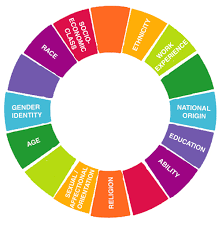
Lesbian, gay, bisexual, transgender (LGBT) has become controversial in today's society. Although it may seem so common, it is still a tough subject to discuss. In my experience, I was never in a classroom where a teacher explained the issues of LGBT.
Gerri August's discusses the issues of LGBT in her article, "Safe Spaces."

This article includes many stories of LGBT individuals and real life struggles of LGBT people in their schools, families, and communities
.
"I see myself as a relatively open-minded person who is open to diverse viewpoints. I am open to learning about people's culture, but I am not as open in the idea of education children of the importance of LGBT. In my opinion, children at any age shouldn't be educated about that because I see it as perversion and not as a natural way of loving someone" (93). The student who said this has a point because I believe discussing LGBT topics into classrooms may be quite uncomfortable and could possibly offend students, especially because this topic is so personal. However, not speaking about this topic may have a child feeling left out. Because people are continued to get bullied for "coming out of the closet" and being themselves, I think schools should bring awareness to the students in order to prevent the bullying from happening.
 “The oft-stated objective is for children to
learn that families come in different shapes and sizes, live in different
dwelling, observe different traditions and celebrate different holidays. Teach around our nations narrate stories
about single-parent families, adoptive families, divorced families and foster
families. The idea is that tolerance will grow as students gain appreciation for difference” (85). Everyone's family and culture is different and in school, at a reasonable age children should be taught to know this. Teachers should teach children that not all families have a mom and a dad, or celebrate Christmas. This quote reminded me of Rodriguez's piece, "Aria" because he was expected to learn English and forget about his Spanish culture due to it not being the social norm.
“The oft-stated objective is for children to
learn that families come in different shapes and sizes, live in different
dwelling, observe different traditions and celebrate different holidays. Teach around our nations narrate stories
about single-parent families, adoptive families, divorced families and foster
families. The idea is that tolerance will grow as students gain appreciation for difference” (85). Everyone's family and culture is different and in school, at a reasonable age children should be taught to know this. Teachers should teach children that not all families have a mom and a dad, or celebrate Christmas. This quote reminded me of Rodriguez's piece, "Aria" because he was expected to learn English and forget about his Spanish culture due to it not being the social norm.
 "Heterosexism is one of those unexamined avenues of privilege. Assumptions that everyone is (or should be) heterosexual shape most classroom interactions, whether academic or social. Assumptions about gender binaries and appropriate gender roles also pervade our classrooms" (84).
"Heterosexism is one of those unexamined avenues of privilege. Assumptions that everyone is (or should be) heterosexual shape most classroom interactions, whether academic or social. Assumptions about gender binaries and appropriate gender roles also pervade our classrooms" (84). Throughout the whole article, this quote stood out to me the most. If you watch a children program on television that includes a family, its most common that a child will have a mother and a father. I do not think that any shows that I watched as a child had two mothers or two fathers. Because of this privilege, a LGBT child may believe that his family is weird because they are not in the "norm."



